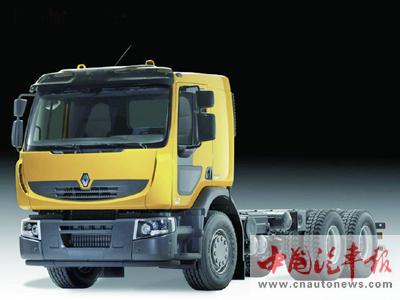What does Renault Truck Upgrade give us?

Domestic truck manufacturers have made remarkable progress and are now among the best in the world in terms of scale. However, when it comes to technological advancement, Chinese trucks still lag behind leading European, American, and Japanese brands. In recent years, several innovative self-developed models have emerged, especially in the heavy truck segment, significantly improving the R&D capabilities and overall quality of domestic truck production. Despite this, the Chinese truck industry is still in a catching-up phase compared to global leaders. There's a lot to learn from international counterparts—by adopting their strengths and addressing our own weaknesses, we can accelerate our development and improve our competitiveness.
This article will use Renault Trucks' latest model as an example to explore trends in European automotive design and highlight areas where China’s trucks still need improvement. The goal is to provide insights that could help local companies grow and innovate more effectively.
Design: Emphasize Unique Identity
Today, the competition among international heavy trucks isn’t just about internal performance—it also involves the visual appeal of the vehicles. Renault Trucks may not be the most powerful or the most recognized brand in Europe, but its unique design language has helped it carve out a niche in the global market. French designers have successfully infused artistic flair and a romantic aesthetic into their truck designs, whether through the three-dimensional front grille or the humanized cab, showcasing a distinct French identity.
With the growing R&D capabilities of Chinese truck companies, many have developed comprehensive product lines. Learning from foreign design strategies, especially in refining family elements on the front face of trucks, is crucial. A memorable and aesthetically pleasing design element can enhance brand recognition and drive future sales. While some Chinese brands like FAW have started using consistent design features—such as the eagle logo on the front grille—their approach remains relatively simple and lacks depth compared to international standards.
Functional Design: Focus on Practicality
In addition to aesthetics, Renault Trucks also emphasizes practical design. For instance, the three-part front bumper helps reduce replacement costs after an accident, while the splash-proof front fender design improves aerodynamics and prevents dirt from splashing onto doors and handles.
Regarding power performance, both Chinese truck manufacturers and users have recognized the need for higher horsepower in heavy-duty trucks. Engine manufacturers are working to upgrade their power units. Currently, engines with 294 kW (400 hp) or more are available, but most heavy trucks still use engines around 220 kW (300 hp). In contrast, Renault Trucks’ flagship Magnum offers up to 367 kW (500 hp), comparable to other top European models. Their Premium Route series, designed for long-haul transport, covers a wide range of power outputs, offering efficiency and practicality for everyday use.
While Chinese trucks have improved significantly, there is still room for growth in terms of power and performance compared to the latest international designs.
For more information: Dongfeng Renault Project Tracking Report
Water Jacket,Screw Tips,Rear Seat,High Quality Screw Tip Set
Zhejiang Guangming Plastics Machinery Co.,Ltd. , https://www.gmscrews.com